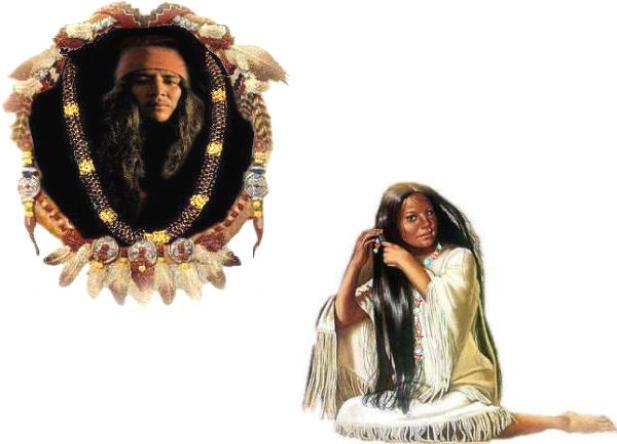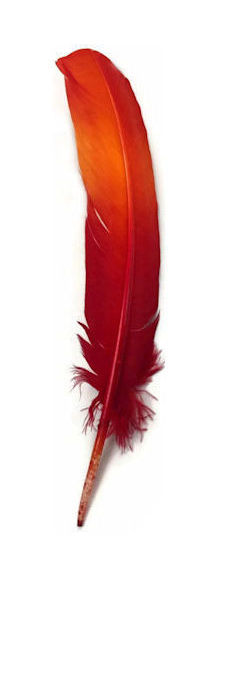

| NATIVE AMERICAN JEWELRY |

Back to the earth, back to nature:
This is the appeal of American Indian Jewelry.
Even the most sophisticated Navajo silver
engraving radiates intense, earthy vitality.
This is the appeal of American Indian Jewelry.
Even the most sophisticated Navajo silver
engraving radiates intense, earthy vitality.
OVERVIEW AND TRENDS IN NATIVE AMERICAN JEWELRY (Copyright 2022) How long ago did Native Americans begin making native jewelry? Answer: Native American beads were found through excavations of Eastern sites dated over 2000 years ago. This shows that jewelry making among some American Indian tribes is a very old craft, but it has changed dramatically over time, especially in the last half of the 20th century. New Native American designs, innovative methods, and newer raw materials came into use in the last 100 years. Most American Indian jewelry produced in the 20th century was made by the Southwest tribes of Hopi, Zuni, Navajo and Rio Grande Pueblo people. However, the quality producers today represent a cross section of tribes from Alaska to the Southwest and all points east. They are no longer held to traditional native styles, tightly bound by the past, or limited by nearby resources or technology level. Now, they can work in a constantly evolving art form, which invents new designs and freely borrows ideas from other tribes. However, this was not always the case. American Indian art forms had been bound and shaped by their way of life, and the output was determined by the resources and technology that artists had available at the time. Historical events experienced by each tribe provided the symbols important to that tribe and therefore became the symbols used in their art forms. LIFESTYLES, RESOURCES AND TECHNOLOGY AFFECTED NATIVE AMERICAN JEWELRY MAKING All American tribes created art and jewelry, but those who produced a large amount of intricate art forms generally led more sedentary, farming lifestyles. They had the free time allowing artistic tribal members to pursue their work full-time. Nonetheless, these artists were limited by the resources and technology available with which to create their designs, and historical events determined the symbols they used. Example of How Native American Jewelry Making Technology Affected Designs Certain creative techniques have withstood the test of time. The Navajo silversmiths learned how to melt and cast silver shapes from the Mexican silversmiths, and Navajo native jewelry artisans today continue to use sand casting and engraving to produce silver jewelry designs. They began sand casting silver bracelets and rings around 1875. The silver was melted and then poured into a mold, which was carved from sandstone. Cooled and set, the piece requires a great deal of filing and smoothing. Sometimes, the Navajo used both techniques in one piece, casting the silver design and then engraving it with symbols. SCARCITY OF RESOURCES AFFECTED JEWELRY DESIGNS NAVAJO INDIANS We think of Navajo jewelry style as always having lots of turquoise among its elaborately engraved silver. Yet, necklaces made in the early times had simple designs made mostly of silver and without the large turquoise nuggets associated with the Navajo. Turquoise was scarce, limiting its use in jewelry. Before 1875, Navajo silver jewelry decorations had been shaped into silver using dies or punches. The design selected for the silver piece was borrowed from Mexican leather tooling styles. The Navajo Native American ingenuity transferred what the Mexicans had done in leather to their own specialty of using silver in creating designs. They obtained silver by melting Mexican and European coins. Although Navajo native jewelry makers would engrave symbolic images into their designs, they are one of the few Native American tribes whose motifs do not have symbolic meaning. Turquoise necklaces and bracelets in general have always been closely identified with the Navajo, but it was not until 1880 that Navajo bracelet makers set turquoise stones into silver jewelry pieces. Except for the turquoise used by the early Eastern Native Americans to make wampum, turquoise stone was very scarce and it was not until 1920, when it became readily available for making native ornamentation in the Southwest as the mining became more active. This is why early Navajo personal antique adornment has only a few stones within each piece. LIMITATIONS ON CREATIVITY SOUTHWESTERN NATIVE INDIAN TRIBES Creative output is limited by environmental conditions and the style of the tribe's adjustment to it. Southwestern Native Americans had an arid climate to contend with, but many tribes discovered how to farm crops, which gave some of their people the time to devote to making jewelry and Kachina art. By planting crops and raising livestock for food they could settle in one place, instead of roaming the southwest in search of food as they had traditionally done. This contributed to their ability and desire to create native jewelry, Kachina dolls and pottery in large numbers, because it could be carefully stored, protected and cherished. PLAINS INDIANS In contrast, the Plains Native Americans were migratory and made sturdy, lightweight objects of hide. They decorated them with porcupine quills, and later, small glass beads. Their artistic endeavor was limited by their hunting and gathering lifestyle, because it required them to be migratory. They had to create art objects that were useful and could be carried when the buffalo herds moved to greener grasses. Buffalo meat, skin and bone were their most important resources and it composed their art forms. NORTWESTERN COASTAL INDIANS The Northwest Coast Native Americans fished the rivers and ocean shores and gathered plants and berries. Their forested environment gave them plenty of wood to carve artistic items. They carved beautiful totem poles, feast bowls, knife handles and beautiful jewelry. These items were imbued with spiritual symbols and religious meaning. GROWING AMERICAN ENCROACHMENT AFFECTED CREATIVE OUTPUT Northeastern and Southeastern Native Americans were very artistic people, but their societies were being decimated by the encroaching European settlers who pushed them further to the southeast, eventually moving them to reservations. The Cherokee actually stopped creating art, necklaces or beadwork after the U. S. troops forcibly moved them in 1838, to a reservation in Indian Territory (now Oklahoma). They suffered the trauma and deaths of nearly a third of their people during the march called "Trail of Tears." Happily, Cherokee jewelry makers had resumed making their beautiful bead-work by the 1950's and are very active making beautiful personal adornment and art today. HISTORICAL POLITICAL EVENTS AFFECTED NATIVE AMERICAN JEWELRY DESIGNS CHEROKEE INDIANS Not surprisingly, tear drop shapes are common in Cherokee necklaces, and a seed called "Corn Tears" or Job's Tears" is commonly used in Cherokee necklaces. It is said that as Cherokee women walked and cried along "The Trail" they saw tear drops hanging from corn plants. In actuality, they were the seed pods that hang from the tops of a wild Asian grain that grew along "The Trail." See our Cherokee "Corn Tears" necklaces The rose symbol is also favored in Cherokee necklace designs. A Cherokee story tells us that the spot where tears fell along "The Trail," as the women cried for those who died, a rose began to sprout in its place. The wild "Cherokee Rose" still grows along the route of the "Trail of Tears." Along with bead-work, the Cherokees also produce beautiful wood carving and baskets. Following the move to the Indian Territory Reservation, the Cherokee had to follow a sedentary lifestyle. They began to actively build a new society following American ways of life. This eventually gave them more leisure time to pursue artistic endeavors. Increasing Sedentary Lifestyle Contributed To The Growing Production Of Art Forms, Especially Native Jewelry Native American tribes who abandoned the "hunting and gathering" method of obtaining food and other necessities produced an increasing amount of intricate art forms. They had the free time to allow their artistic tribal members to pursue their work full-time. This was important to the development of Native jewelry and art. APACHE INDIANS Apache jewelry is rich in gem stones and precious metals such as silver, gold or platinum. Some Native American jewelry items, especially rings, have intricate engravings of Apache Indian symbols, which when put together will tell a story. The Native American teardrop jewelry style is very popular in Apache jewelry. The use of the tear drop symbol in Apache jewelry comes from a battle fought between the Apache and U. S. Calvary on top of a mountain near Superior, Arizona in 1872. A large contingent of soldiers squared off with 75 Apache braves. Unwilling to surrender, the surrounded Apaches proudly rode their horses off a cliff. When the Apache women learned of the warrior's deaths, they cried for days. As the tears fell to the ground, it is said that they turned to stone in the shape of a teardrop. Onyx or obsidian became common in Apache necklaces and are said to bring good luck to the wearer "forever." Other symbols used by the Apache to make Native American necklaces may include arrowheads and thunder stripes. The most sacred of all native jewelry symbols used by the Apache Indian jewelry artisan is the sacred hoop which represents the Chief. Jewelry made by Native American Apaches may have a symbol worked into precious metal with an inlay of gemstones for the pendant, with beads shaped from wood, shell, bone or nuts. In general, Apache Indian necklaces are usually big and bold with large gemstones, such as turquoise, opal, coral, and magnesite. Wood, shell, nuts and seeds are found in interesting combinations. Bone has long been important and comes from the rib bone chest shields commonly worn by the Apache warrior for protection. Today, it is used in the popular Apache choker necklace. HOPI INDIANS Hopi jewelry, Kachinas and art are filled with images of the animals and scenery seen in everyday life. This harmony with nature is reflected in the symbols used in their dances, rituals, art, and native jewelry. Water is frequently symbolized in their Indian jewelry, as are turtles, frogs, clouds, rain, lightning, and waves. Fertility and abundance may appear in American Indian jewelry as corn, bean sprouts, and other crops in necklaces or pendants. |



Our Jewelry Artisans Are Descendants of Native American Apache, Cherokee and Pueblo Indians.
MOST ARE ON TRIBAL ROLLS. We have provided you with
indepth information on Native American jewelry culture
and history using scholarly sources and historical photos.
SEARCH OUR SITE USING THIS SEARCH TOOL:
MOST ARE ON TRIBAL ROLLS. We have provided you with
indepth information on Native American jewelry culture
and history using scholarly sources and historical photos.
SEARCH OUR SITE USING THIS SEARCH TOOL:
American Indian Originals P.O. Box 1986 Loma Linda CA 92354 indian.jewelry.store@gmail.com |

Our Store Uses PayPal and is Secure and Safe from Spam and all Viruses.